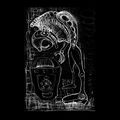Template:Selected anniversaries/September 27: Difference between revisions
No edit summary |
No edit summary |
||
| Line 40: | Line 40: | ||
||1917: Carl Ballantine born ... magician and actor. | ||1917: Carl Ballantine born ... magician and actor. | ||
||1918: Martin Ryle born ... astronomer and author, Nobel Prize laureate. | ||1918: Martin Ryle born ... astronomer and author, Nobel Prize laureate. Pic. | ||
||1919: James H. Wilkinson born ... mathematician and computer scientist. https://www.google.com/search?q=James+H.+Wilkinson | ||1919: James H. Wilkinson born ... mathematician and computer scientist. https://www.google.com/search?q=James+H.+Wilkinson | ||
| Line 51: | Line 51: | ||
||1956: USAF Captain Milburn G. Apt becomes the first man to exceed Mach 3 while flying the Bell X-2. Shortly thereafter, the craft goes out of control and Captain Apt is killed. | ||1956: USAF Captain Milburn G. Apt becomes the first man to exceed Mach 3 while flying the Bell X-2. Shortly thereafter, the craft goes out of control and Captain Apt is killed. | ||
||1961: Harry Traver dies ... engineer and early roller coaster designer. As the founder of the Traver Engineering Company, Traver was responsible for the production of gentle amusement rides like the Tumble Bug and Auto Ride. However, Traver's coasters became legendary for their unique twisted layouts and thrilling, swooped turns. At a time when most coasters were built from wood, Traver was the first coaster builder to utilize steel for the primary structural material. Pic search yes: https://www.google.com/search?q=harry+traver+roller+coaster | |||
File:Silent Spring by Rachel carson.jpg|link=Silent Spring (nonfiction)|1962: Rachel Carson's book ''[[Silent Spring (nonfiction)|Silent Spring]]'' is published, inspiring an environmental movement and the creation of the U.S. Environmental Protection Agency. | File:Silent Spring by Rachel carson.jpg|link=Silent Spring (nonfiction)|1962: Rachel Carson's book ''[[Silent Spring (nonfiction)|Silent Spring]]'' is published, inspiring an environmental movement and the creation of the U.S. Environmental Protection Agency. | ||
Revision as of 07:21, 18 July 2019
1677: Mathematician, astronomer, and cartographer Johann Gabriel Doppelmayr born. He will publish works on mathematics and astronomy, including sundials, spherical trigonometry, and celestial maps and globes, along with biographical information on several hundred mathematicians and instrument makers.
1737: Physician, mathematician, and engineer Hubert Gautier dies. He authored the first book on bridge building, Traité des Ponts, in 1716, as well as books on roads, fortifications, antiquities, geology, and a first manual for watercolor practitioners.
1783: Mathematician Étienne Bézout dies. His Théorie générale des équations algébriques contained much new and valuable matter on the theory of elimination and symmetrical functions of the roots of an equation.
1879: Mathematician and philosopher Hans Hahn born. He will make contributions to functional analysis, topology, set theory, the calculus of variations, real analysis, and order theory.
1905: The physics journal Annalen der Physik received Albert Einstein's paper, "Does the Inertia of a Body Depend Upon Its Energy Content?", introducing the equation E=mc².
1928: Mathematician and academic Hans F. Weinberger born. He will contribute to variational methods for eigenvalue problems, partial differential equations, and fluid dynamics.
1938: Mathematician and philosopher Edmund Husserl publishes new class of Gnomon algorithm functions based on transcendental consciousness as the limit of all possible knowledge.
1962: Rachel Carson's book Silent Spring is published, inspiring an environmental movement and the creation of the U.S. Environmental Protection Agency.
2018: Signed first edition of Two Creatures 6 used in high-energy literature experiment unexpectedly forms a spontaneous transdimensional corporation.








